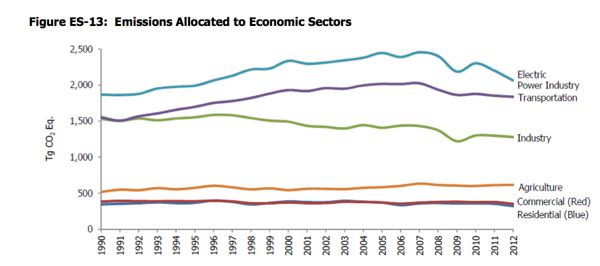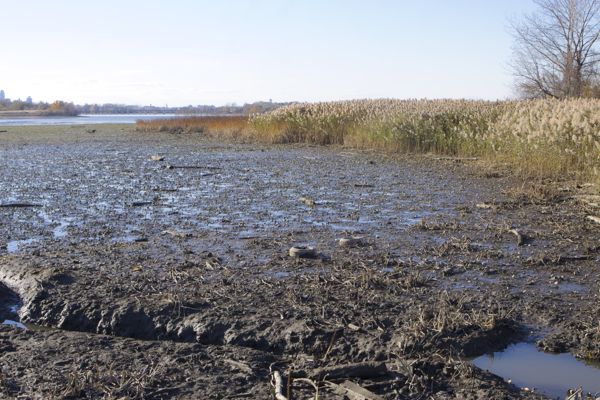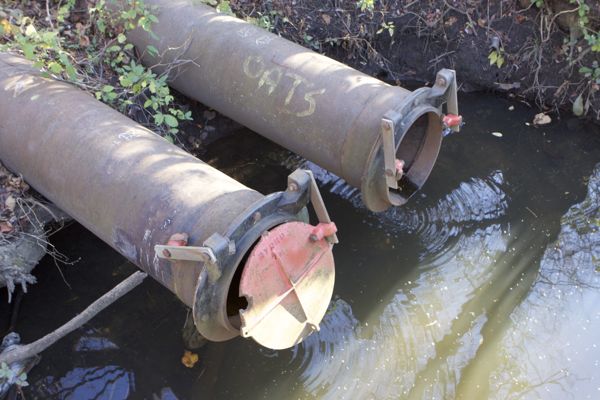Deadly Gas Leak of “Extraordinarily Hazardous Substance” Shows NJ Hazards
NJ Lawmakers Must Abandon Bill That Would Weaken NJ’s Chemical Safety Program
“Industry (e.g., CIC and NJBIA) would obviously prefer backing off to the EPA thresholds. .However, the increases made by EPA on adoption were so large (averaging some 18 times the TCPA values with 33 of the 60 substances common to both lists assigned from 5 to 167 times corresponding TCPA values) that they are not technically justifiable in an area as densely populated as New Jersey where substances are generally handled on small sites, and would correlate with a significant increase in the number of potential fatalities”. ~~~ DEP Assistant Commissioner Lew Nagy memo (see page 126)
[Update: 11/21/14 – Like I said, Dupont killed 4 workers – from the NY Times we learn:
The company took hours to confirm the deaths and notify relatives. DuPont officials said no qualified medical personnel could enter the contaminated unit because they were not trained to use protective equipment. The first workers who responded with the proper equipment were not medically trained and reported the employees as nonresponsive and most likely dead.
“It was on that basis that the unit was barricaded for investigation just before 8 a.m.,” a company statement said. “The incident scene was deemed safe to enter just before noon and the fatalities were confirmed by the medical examiner around 1:30 p.m., and we immediately began to inform families thereafter.”
Asked if any of the four workers were alive but nonresponsive before the unit was barricaded, Mr. Schmidt said, “We can’t answer that definitively until the investigation is completed.” – end update
A leak of the deadly chemical methyl mercaptan killed four workers and hospitalized a fifth at a Dupont chemical plant in La Porte Texas yesterday, see:
I am sure investigations will show the now familiar pattern: a lax approach to safety by Dupont; repeat violations of health and safety regulations set by EPA and OSHA; and lax oversight and enforcement by government regulators.
[Update: 11/17/14 NBC News coverage asks those questions.]
I would not be surprised if we see the kind of criminal conduct that resulted in the recent indictment of Massey Energy CEO Don Blankenship.
But until those investigations are complete, I want to make a few observations about the implications here in NJ.
The event is further proof that chemical risks are real and require far more aggressive regulatory oversight, see:
The chemical involved, methyl mercaptan, is regulated under NJ’s Toxic Catastrophe Prevention Act (TCPA) program as an “extraordinarily hazardous substance” (EHS) – see NJ Group II & Appendix A
[Note: the NJ TCPA regulatory threshold for methyl mercaptan is 2,400 pounds, versus 10,000 pounds under the federal program, another example of NJ’s more stringent requirements.]
NJ has unique risks from catastrophic chemical accidents due to our high population density and close proximity of many people and homes and schools to many chemical plants distributed across the state.
The deadly accident is another example of continuing chemical risks in NJ, most recently illustrated by the toxic train derailment in Paulsboro, which released vinyl chloride gas that hospitalized scores of people and forced evacuation of the community.
The Dupont Texas accident also shows that Gov. Christie’s efforts (see Executive Order #2) to provide “regulatory relief”; to roll back NJ’s stricter chemical safety standard to federal minimums; and to inject compliance cost considerations in regulation are reckless and irresponsible.
Even worse, just weeks ago, on October 27, 2014, I testified in opposition to a bill, S2511 (Madden, D -Camden & Gloucester) that would weaken NJ’s TCPA chemical safety program. Assemblywoman Spencer (D – Essex) has sponsored the companion bill in the Assembly (A3881) – we believe at the request of Anheuser Busch to provide relief to the Budweiser plant in Newark.
I must note that I was the only one to testify in opposition to this very bad bill, sponsored by Democrats. Where were the groups they get funded to do this work?
I will also note that, in a highly unusual move, Assemblywoman Spencer, Chair of the Assembly Environment Committee and sponsor of the Assembly version, attended the Senate hearing. Chairman Smith noted her presence and asked why she was there, Spencer replied that she wanted to listen to the testimony on bills that might come before her Committee. So, let’s hope she listened closely.
We call on those legislators to withdraw those bills immediately.
Here is our letter to the sponsors regarding our October 27, 2014 testimony which has some valuable information (Assemblywoman Spencer was copied on this letter):
October 28, 1014
Dear Chairman Smith and Senator Madden:
Below please find information requested by Chairman Smith to support my testimony on S2511 before the Senate Environment Committee on October 27, 2014.
1. Status of TCPA regulations
Contrary to the industry testimony that suggested that the NJ TCPA regulations (NJAC 7:31 et seq.) were outdated and not informed by more recent improvements to the federal program, please be advised that the current NJ DEP TCPA regulations were re-adopted with amendments on March 16, 2009. See:
http://www.nj.gov/dep/rules/adoptions/adopt_090316a.pdf
The TCPA rules were scheduled to expire in 2014, but were extend by 2 years as a result of recent legislation that extended the sunset date for rules from 5 to 7 years.
It is my understanding that the anhydrous ammonia refrigeration issues were specifically considered by DEP in the 2009 re-adoption process and that DEP expressly reviewed and rejected the industry’s request to weaken NJ’s requirements.
2. Scientific and legal basis for TCPA regulation of anhydrous ammonia
According to DEP TCPA regulations, the basis for regulating anhydrous ammonia is twofold. Listing was: a) Mandated for listing by Congress, and b) anhydrous ammonia is on the extraordinary Hazardous Substances (EHS) EHS list, vapor pressure 10 mmHg or greater.
According to the federal Agency for Toxic Substances and Disease Registry (ATSDR), risks from anhydrous ammonia include death from inhalation (see page 25:
http://www.atsdr.cdc.gov/toxprofiles/tp126-c3.pdf
3. NJ TCPA standards versus federal Clean Air Act Section 112(r) risk management program
As I testified, NJ is not like the rest of the country. Our land use and risk factors justify more stringent State regulation. More stringent state regulation is authorized by most if not virtually all federal environmental laws, and NJ has led the country in that regard.
In fact, NJ’s TCPA program was the model for the federal program established under section 112(r) of the Clean Air Act.
My testimony cited and included excerpts from a NJ DEP analysis that compared the NJ State TCPA program to the federal 112(r) program. specifically this critical conclusion:
“Industry (e.g., CIC and NJBIA) would obviously prefer backing off to the EPA thresholds. .However, the increases made by EPA on adoption were so large (averaging some 18 times the TCPA values with 33 of the 60 substances common to both lists assigned from 5 to 167 times corresponding TCPA values) that they are not technically justifiable in an area as densely populated as New Jersey where substances are generally handled on small sites, and would correlate with a significant increase in the number of potential fatalities”.
Chairman Smith requested a copy of this memorandum.
Accordingly, please be advised that the complete DEP memo can be found on page 126 of Whitman EPA US Senate confirmation hearing transcript – to access the complete document, hit that embedded link or this:
https://bulk.resource.org/gpo.gov/hearings/107s/69822.pdf
4. NJ TCPA “threshold quantity” versus federal threshold quantity.
The NJ TCPA regulations are more stringent that the federal rules. One of the key NJ standards is the “threshold quantity” of an EHS that triggers regulation.
The NJ TCPA “threshold quantity” for anhydrous ammonia is 5,200 pounds. This lower threshold is justified by risk, as a function of NJ’s population density and proximity to chemical use, see:
5. Risk considerations
The industry testimony failed to mention the most critical issue, i.e. the risks to workers and nearby communities that could be exposed to a catastrophic release or accident.
TCPA and federal regulations require a facility to model the risks of such an event:
“Consequence analysis” means the determination of the potential consequence of an EHS release on the surrounding population, using dispersion, thermal or overpressure analysis and, at a minimum, identifying potential populations exposed to the toxic, thermal or overpressure endpoint for each EHS.
To understand the nature and magnitude of these risks, legislators need to ask industry to present their “consequence analysis” under NJ TCPA regulations.
6. Paulsboro toxic train derailment
I urge you to read the NationalTransportation Safety Board’s Report on the Paulsboro NJ train derailment that hospitalized scores of people and forced evacuation of portions of the community.
The NTSB Report provides a scathing critique of NJ’s State, local, and private sector planning, preparation, regulatory oversight, and response to chemical accidents, see:
http://www.ntsb.gov/doclib/reports/2014/RAR1401.pdf
Given these major weaknesses, we need to beef up regulation of chemical risks. It is not sound public policy to be weakening NJ State regulations.
7. NJ Work Environment Council (WEC) Reports on TCPA
I’ve reached out to Rick Engler at WEC – he will be in touch with you and has concerns and expertise to offer.
Here are relevant links to WEC Reports
I reiterate my testimony in opposition to this bill and will be submitting additional testimony. I strongly urge you to table it now.
Sincerely,
Bill Wolfe, Director NJ PEER











